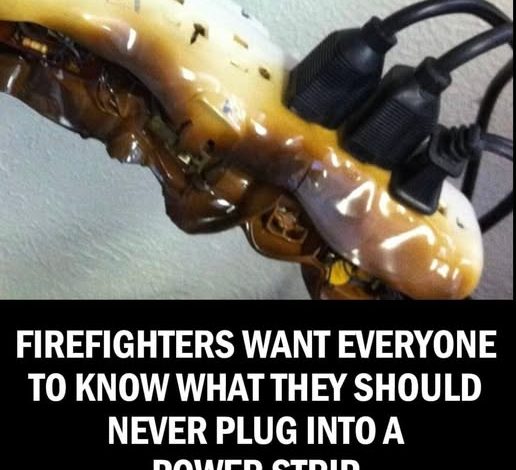Firefighters Want Everyone To Know What They Should Never Plug Into A Power Strip!

ADVERTISEMENT
As winter settles in and the northern hemisphere tilts away from the sun, a familiar ritual unfolds: thermostats rise, blankets reappear, and families gather to keep the cold at bay. In homes with drafty windows or uneven heating, one device becomes a seasonal hero—the space heater.
ADVERTISEMENT
Compact and powerful, space heaters can transform a frigid room into a cozy retreat in minutes. But behind their comforting glow lies a serious, often underestimated risk—one that fire departments across the country are urgently trying to highlight.
ADVERTISEMENT
🔥 The Silent Threat: Power Strips and Space Heaters
Many people assume that any plug fits any outlet. But that assumption is proving dangerous—sometimes deadly. Fire departments from Oregon to Ohio are issuing a clear warning: never plug a space heater into a power strip or surge protector.
This message gained traction after Umatilla County Fire District #1 in Oregon shared a photo of a melted power strip on social media, accompanied by a stark reminder: “You should never plug a heater into a power strip.” It’s not just a suggestion—it’s physics.
⚡ Why It’s So Dangerous
Power strips are designed for low-wattage electronics—think lamps, chargers, or TVs. Space heaters, on the other hand, are high-wattage appliances that draw a large amount of current to generate heat quickly. When plugged into a power strip, the strip can’t handle the load. The result? Overheating, melting plastic, fused wires, and in many cases, fire.
This isn’t hypothetical. In Ohio, a space heater plugged into a power strip caused a fire that engulfed a home in minutes. The couch caught fire first. The rest followed fast.
🔌 The Right Way to Use a Space Heater
- Always plug directly into a wall outlet. Wall wiring is built to handle the load. Power strips are not.
- Follow the “three-foot rule.” Keep heaters at least three feet away from anything flammable—curtains, bedding, furniture, laundry, even walls.
- Place on a hard, flat surface. Avoid carpets, tables, or stools. These increase the risk of tipping or heat buildup.
- Never leave it unattended. Turn it off when you leave the room. Never sleep with it running.
Even models with tip-over sensors or auto shut-off features can fail. Don’t rely on them as your only safeguard.
🔥 Beyond Space Heaters: Broader Electrical Safety
Space heaters are just one part of a larger conversation about how we use electricity at home:
- Unplug heat-producing appliances (toasters, curling irons, kettles) when not in use. They can malfunction or be accidentally turned on.
- Don’t treat extension cords as permanent wiring. Running them under rugs or stapling them to walls is a fire hazard. If you need more outlets, call an electrician.
- Respect the third prong. It’s there for grounding and safety. Never cut it off or use “cheater plugs.” If your home still has two-prong outlets, it’s time for an electrical upgrade.
🛑 A Final Word
As temperatures drop and the instinct to stay warm kicks in, take a moment to think about safety. The extra effort to plug a heater into a proper outlet—or to clear a safe space around it—can mean the difference between comfort and catastrophe.
Keep the power strips for your phone chargers. Let your wall outlet handle the heat.
Stay warm. Stay safe. And never underestimate the quiet power of prevention.




